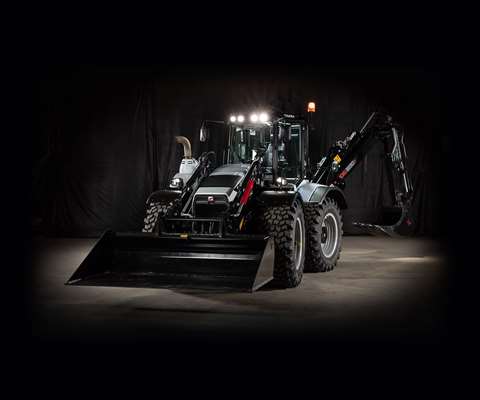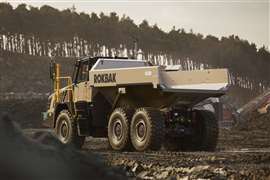Huddig launches ‘world’s first’ hybrid backhoe
06 July 2021
Swedish OEM concludes testing and sends diesel-electric Tigon loader out to first customer
 Huddig’s Tigon diesel-electric hybrid backhoe loader
Huddig’s Tigon diesel-electric hybrid backhoe loader
Swedish construction equipment manufacturer Huddig is claiming to have the first commercially available diesel-electric hybrid backhoe loader on the market.
The company said tests on the Huddig Tigon loader were concluded in the spring and the first machine has now been sent out to a customer.
Huddig says the Tigon has 30% more power than its diesel counterpart and can run entirely on electricity or fossil-free on HVO 100 diesel.
Huddig first announced the Tigon hybrid technology in 2015, describing how the diesel engine powers three EMGs (electric motor generators). The EMGs then supply power to the pumps operating the machine’s hydraulics and can also charge a lithium battery.
For certain operations, the EMGs and the battery can together supplement the power of the diesel engine.
Daniel Åkerström, then development manager for Tigon Technology at Huddig, said, “Tigon Technology is the result of several years of development in close cooperation with world class component suppliers. What’s unique about Tigon Technology is not the separate components, but the way in which we combine them and control them via our management system.”
Daniel Myrgren, marketing and sales manager at Huddig, said the Tigon “…will revolutionise the construction industry in several ways. Naturally, through reduced emissions, but also through the new opportunities and areas of use that electric power enables. We will definitely see new ways of working with construction machinery in the future.”
Jonas Löfskog owns Jonas Excav, the first company to operate the new loader. He said, “It is not only the environmental aspect of Tigon that is fascinating but also the performance of the machine. It is both stronger and more flexible, at the same time as it can run silently. Huddig Tigon improves the work environment – both for me and for those who work around the machine.
“For example, we hear each other better because the machine is quieter. It is also simple to charge. An ordinary 3-phase CEE connector, 16A or 32A is enough, which is basically available on all construction sites.”
STAY CONNECTED


Receive the information you need when you need it through our world-leading magazines, newsletters and daily briefings.
CONNECT WITH THE TEAM











